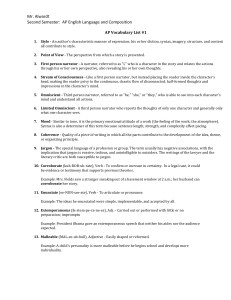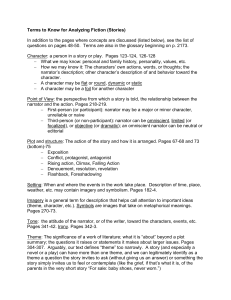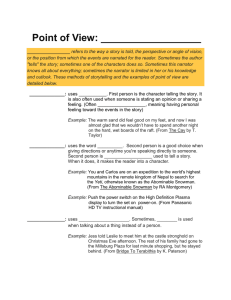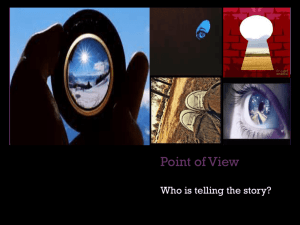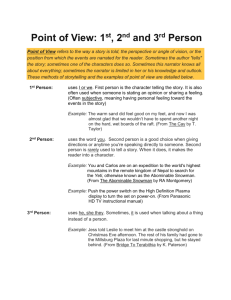Types of Point of View
advertisement
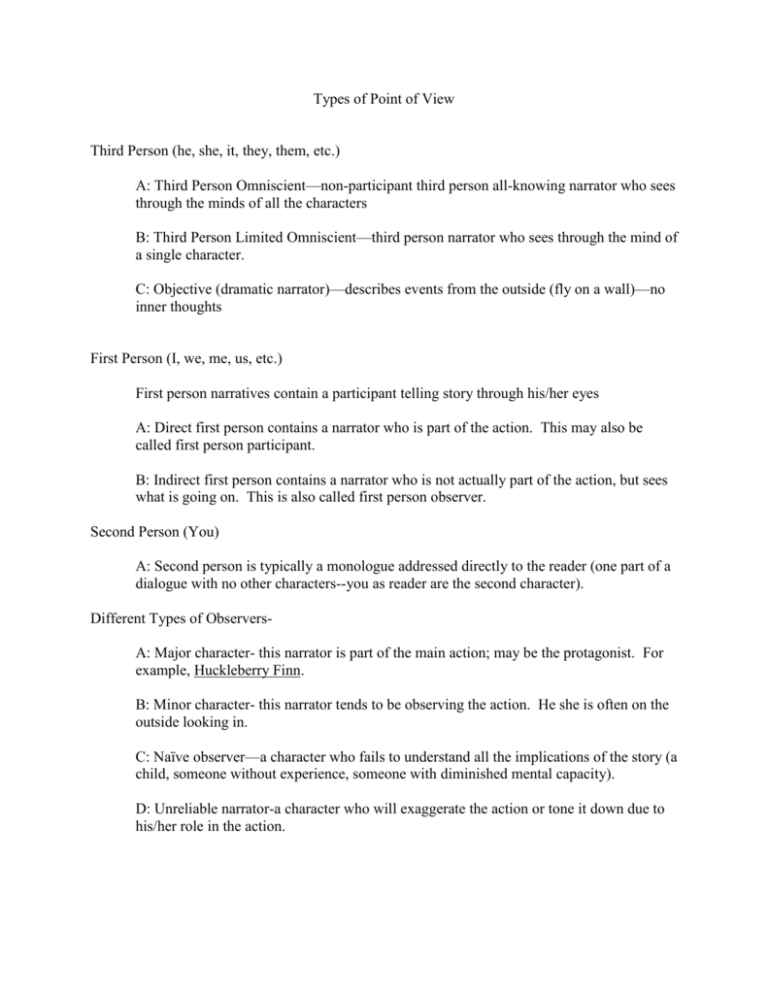
Types of Point of View Third Person (he, she, it, they, them, etc.) A: Third Person Omniscient—non-participant third person all-knowing narrator who sees through the minds of all the characters B: Third Person Limited Omniscient—third person narrator who sees through the mind of a single character. C: Objective (dramatic narrator)—describes events from the outside (fly on a wall)—no inner thoughts First Person (I, we, me, us, etc.) First person narratives contain a participant telling story through his/her eyes A: Direct first person contains a narrator who is part of the action. This may also be called first person participant. B: Indirect first person contains a narrator who is not actually part of the action, but sees what is going on. This is also called first person observer. Second Person (You) A: Second person is typically a monologue addressed directly to the reader (one part of a dialogue with no other characters--you as reader are the second character). Different Types of ObserversA: Major character- this narrator is part of the main action; may be the protagonist. For example, Huckleberry Finn. B: Minor character- this narrator tends to be observing the action. He she is often on the outside looking in. C: Naïve observer—a character who fails to understand all the implications of the story (a child, someone without experience, someone with diminished mental capacity). D: Unreliable narrator-a character who will exaggerate the action or tone it down due to his/her role in the action.






